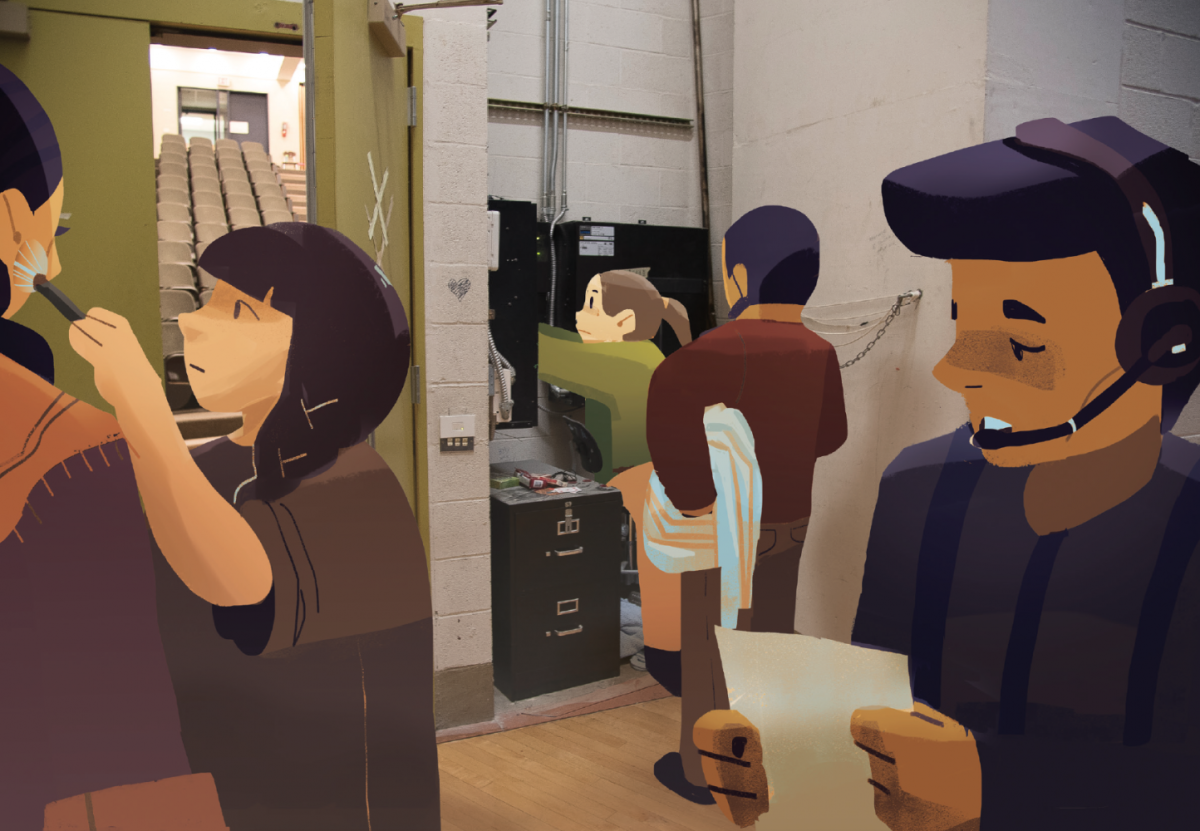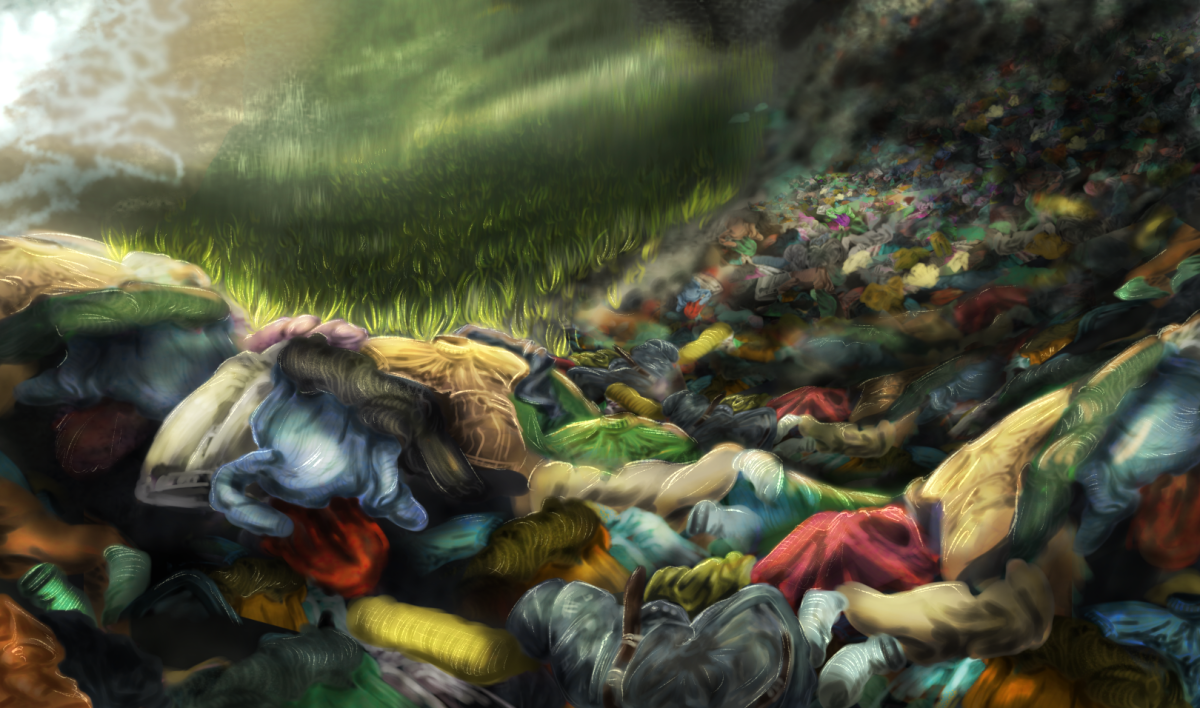For President David Munson, the performing arts have always been an essential part of life.
“As a youngster, I grew up in a musical family. Everyone sang, and a lot of people played instruments. My grandmother was a church organist until she was 95 years old,” Munson recalled. “So I grew up crawling through the pipe chambers of pipe organs, if you will.”
Now, he’s looking to bring that lifelong passion to RIT.
“RIT is already well known for visual arts and design,” Munson said. “We do have some excellent student performing groups, but it’s an area we’re not as well-known for. I like what I see our students doing, but I think our programs could be better; that we can offer more to our students in the performing arts.”
This won’t be Munson’s first time bringing the arts into a technical environment. At both of his past positions, he was a strident supporter for integrating the performing arts. While teaching at the University of Illinois, Munson helped start a yearly Electrical Engineering faculty variety show. At the University of Michigan, he fostered ArtsEngine, a program geared at fostering collaboration between students in the arts and in the sciences.
After several years, Munson and his colleagues decided to expand their efforts outside of the University of Michigan. The Alliance of the Arts in Research Universities was formed shortly thereafter.
“The theme was to be more fully engaged in the arts throughout research universities, and the notion that the arts shouldn’t just be a standalone conservatory-style enclave within a university,” Munson said. “The arts have different ways of understanding the world, different ways of knowing, being and seeing the way. And we believed that they should be integrated throughout the university.”
Over 40 universities across the country are now part of this collective, including some of the nation’s top research institutions — Stanford, Berkley and MIT, to name a few. RIT has just joined the ranks as one of its newest members.
However, Munson’s decision to build up the performing arts is not without its critics. Back in August, the Democrat and Chronicle published an article voicing concerns that an RIT program would be redundant given a certain local powerhouse: The Eastman School of Music.
“We certainly don’t have any intention of competing head-to-head with Eastman,” Munson responded. “I think it’s safe to say that we won’t emphasize classic music to the extent that Eastman does. That’s not to say we won’t do classical music and opera, but there are a lot of things we can do that you just don’t see at other universities.”
Munson suggested that some possible alternatives might include anything from standup comedy, to magic, to a resident rock band, to bagpipes, to steel drums. He also believes the school is uniquely poised to take on artistically and technologically challenging musical theater productions.
That being said, it’s hard not to wonder how the performing arts might fit within RIT’s broader technical focus. Munson would argue the two go hand in hand.
“I think this even stronger emphasis on the arts is a good fit given our focus on creativity.”
“When it comes to engineering and the arts, it’s hard to be successful without creativity. With engineering, it’s all about coming up with things that never before existed,” he said. “I think this even stronger emphasis on the arts is a good fit given our focus on creativity.”
While this project is still in its early stages, Munson did mention that preliminary steps are being taken.
“The next steps are to have some faculty and administrators planning out the future of performing arts. So we’re just getting started on that. The current music and theater programs are located in the College of Liberal Arts, so we expect that they will play a strong role in determining the program’s future,” Munson said. “We’re starting to have those conversations.”
Financial Feasibility
Budget Director Kerry Phillips was able to provide some additional insight into how a project of this scale might go from a prospect to financial reality.
“In midwinter we have budget hearings and then the requests are prioritized,” Phillips explained. “The voting members are the president, the provost and the vice president of finance and administration.”
Phillips, who has been with the budget office for 20 years and has been its director for six, has seen similar projects go through this very same process.
“Golisano College was at one time a part of CAST, and that was broken off to be its own college. And that was growing, four, five, six hundred students a year,” Phillips recalled.
Growing a program can create financial strain, however. As funds are allocated to the development of one program, sometimes other departments can get left behind.
“As we were growing Golisano college, and giving them all the money,
Luckily, the university recognized their mistake and moved to mitigate it the next time around.
“When we put in the Chemical Engineering and Bio Engineering programs, we’d learned our lesson and gave Liberal Arts additional resources,” Phillips said.
Current Programs
Like the other programs Phillips mentioned, the performing arts department will not have to be built from scratch. There are several robust programs already in place that should help buoy its success.
“I should probably emphasize that although Dr. Munson is bringing this new excitement, the arts are already very much a part of RIT,” said NTID Performing Arts Director Dr. Aaron Kelstone. “The program at NTID has been here for 50 years.”
Kelstone’s colleague Thomas Warfield, NTID’s director of Dance, believes that the NTID program has grown to such a degree that now is the perfect time to expand the department.
“We have 32 students in all our dance classes, with a waiting list. There’s this growth that we really need to harness before we lose it,” Warfield said. “So the idea of creating a performing arts center really speaks to the interests of so many students on campus.”
Warfield’s co-choreographer Nicole Hood Cruz was able to provide another unique perspective as an alum of NTID theater. It was her belief that the performing arts can provide valuable teamwork skills that are rarely found elsewhere. She referenced NTID double-casted shows as a particularly strong example.
“We’re brought together by our passion for theater. It becomes a question of ‘how well do we want this to get this across?’” she said.
According to NTID drama professor and Director Luane Davis-Haggerty, stories like Hood Cruz’s aren’t uncommon in the RIT theater world.
“It’s funny — theater has the reputation for big egos, people who don’t get along, there’s drama … when in fact, theater is a team, it’s home,” Davis-Haggerty said.
Hood Cruz was in agreement. “For some students especially, who don’t have a good support system at home because their parents are hearing and they’re deaf — this becomes their second family,” she said.
Another department that strives for inclusion is the new Diversity Theater program. Directed by former Golisano professor Tina Chapman, the office conducts a range of workshops, from improv sessions to staged readings — all to promote the value of diversity. One of their most recent efforts took place just a couple months ago during orientation.
“Diversity Theater did training for the orientation leaders so we could give them the tools to do post discussions after diversity and inclusion workshops,” said Chapman. “The workshops I give use theater-based methods. So it’s a workshop about how to use theater methods for facilitation. I always try to integrate theater not only in the performance aspect, but also into building a sense of community.”
College of Liberal Arts faculty were also contacted for a comment.
“The president has charged me with forming a task force to address this subject and report back to him in December,” Performing Arts Chair Jonathan Kruger wrote in response. They refused to comment further at this time and recommended reconnecting once more of the details have be developed.
The performing arts at RIT extend beyond department programs, however. Kelstone in particular lauded the efforts of student organizations and clubs.
“People here are pursuing technical degrees and the performing arts are still an integral part of their life.”
“I go to some of these events and the students get up and say, ‘Hi, I’m so-and-so and I’m majoring in engineering, or physics or business management.’ It’s all over the place,” Kelstone said. “People here are pursuing technical degrees and the performing arts are still an integral part of their life.”
Students Weigh In
Kelstone’s observation was correct — the students involved in the performing arts at RIT have a range of academic backgrounds. Their opinions on where the program should go were just as varied.
“I think RIT is really unique — we have a lot of interdisciplinary work, and we have a ton of interdisciplinary challenges … I don’t think that has to be limited to the academic world,” suggested Jeselle Clark, a fourth year Bioinformatics major and vice president of the Brick City Boppers, RIT’s swing club.
Derek Gieraltowski, a third year Film and Animation major and active member of RIT Players and 8 Beat Measure, was also interested in cross-disciplinary options.
“The performative aspect of animation really interests me,” Gieraltowski said. “And if you have more people interested in performing at a school, that becomes a resource for film makers. That in turn produces better actors, better films … the quality of everyone’s film is going to increase if you put time and effort into building those programs.”
As to the extent of improvements needed, students were divided. Fourth year Chemistry major Megan Detwiler, who conducts the Pep Band, didn’t believe that the program needs a complete overhaul.
“I actually don’t, and let me tell you why,” she said. “I do think we can expand some of the existing programs. But with one of the best music schools in the country literally right across the street, we shouldn’t try to compete. Instead, we should work more with Eastman to improve.”
“I would like to see more options for students at RIT,” Detwiler elaborated. “If that comes through Eastman or through expanding our program here, then I would like to see it.”
Myers Weidner, a third year Physics major and president of the improv group Fowl Play, thinks the school could be doing more when it comes to promotion.
“RIT has a lot of people who don’t yet know that they want to be part of the performing arts. The best possible way to let people know they have something to offer creatively, is to show them everything we have to offer,” Weidner said. “So having improv shows, having a cappella shows, having dance performances — really making all those available to people is the best thing possible.”
Needless to say, there are multiple avenues RIT can pursue going forward. Munson is optimistic, however, for what the next couple years could have in store.
“One of the things that attracted me to RIT is that it wasn’t just a technical school, and it’s very important to me that RIT should not just be a technical school,” Munson said. “We have very notable strengths in the arts and design. So let’s get this all blended together in a more integrated way.”






